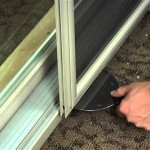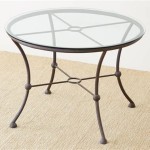Circular Paver Patio: A Guide to Design and Installation
A circular paver patio is a beautiful and functional addition to any outdoor space. Its unique shape adds visual interest and can create a sense of intimacy and enclosure. Circular pavers are also incredibly versatile, offering various design possibilities to suit different styles and preferences. This guide will explore key considerations for designing and installing a circular paver patio, providing practical tips and insights to help you achieve a successful outcome.
1. Planning and Design Considerations
Before breaking ground, a thorough planning process is crucial. The first step involves determining the desired size and location of the patio. Consider the existing landscaping, surrounding structures, and available space to ensure the patio complements the overall outdoor environment. The size of the circle should also be chosen strategically, considering the intended use of the patio. For instance, a smaller circular patio might be ideal for a cozy seating area, while a larger one can accommodate furniture, dining, and even a fire pit.
Next, select the pavers. Circular pavers come in various materials, including concrete, brick, natural stone, and manufactured stone. Each material offers distinct aesthetic and performance characteristics. Concrete pavers are durable and budget-friendly, while brick pavers offer a classic and elegant look. Natural stone provides a more rustic and timeless appeal, while manufactured stone combines the benefits of both natural stone and concrete. Consider the desired look, durability, and maintenance requirements when choosing the paver material.
The arrangement of the pavers also significantly impacts the final appearance of the patio. Consider using different sizes and colors to create a unique pattern, or opt for a simple and elegant design with uniform pavers. For a visually appealing circular patio, the pavers should be arranged in a radial pattern, radiating outwards from the center. This pattern creates a sense of movement and adds to the circular shape's visual appeal. Also, consider using a contrasting paver around the perimeter of the patio to create a distinct border and enhance the overall design.
2. Preparing the Site and Laying the Foundation
Once the design is finalized, prepare the site for construction. This involves removing any existing vegetation, grading the area to ensure proper drainage, and creating a level base. Depending on the soil conditions and the load-bearing capacity of the ground, a foundation may be necessary. A well-constructed foundation is essential for supporting the weight of the pavers and preventing sinking or uneven settling over time. A gravel base is often used for patios, providing drainage while offering a stable platform for the pavers. The gravel base should be compacted to ensure it is solid and level.
The next step is to create the circle's outline. This can be done using a string and stakes or a compass. Once the circle's outline is marked, create a template using a piece of plywood or other suitable material. The template should be large enough to encompass the desired diameter of the patio. The template is then placed on the prepared base, and the outline of the circle is traced onto the gravel using a marker or chalk. This provides a precise guide for laying the pavers.
3. Installing the Pavers and Finishing Touches
With the outline established, it's time to install the pavers. Start by laying the pavers in the center of the circle, working outwards in a radial pattern. Use a rubber mallet to gently tap the pavers into place. As the pavers are laid, ensure they are level and flush with each other. Use a level to check the pavers' height and make adjustments as needed.
Once the pavers are laid, they should be compacted to ensure they are securely in place. A plate compactor is the ideal tool for this task, providing consistent and even compaction. After compaction, add sand or polymeric sand between the pavers to fill any gaps and prevent weed growth. The sand should be swept into the joints between the pavers, and any excess should be removed.
To enhance the patio's aesthetics, consider adding finishing touches. These might include planting flowers or shrubs around the perimeter of the patio, installing a fire pit, or adding outdoor lighting. The choice of finishing touches will depend on the intended use of the patio and personal preferences.

Concrete Paver Circle Pattern Rcp Block Brick

Old Town Flagstone Circle Paver Kit Nicolock Paving Stones

How To Make A Round Patio With Square Pavers Js Brick

Circular Patio Inspiration To Rejuvenate Your Backyard

How To Build A Round Paver Patio

Circle Paver Kit Ideal Cape Cod Nantucket South Shore Ma

Round Pavers Photos Ideas Houzz

Paver Circle Kit Allows You To Add Interest And Curves Your Patio

Ridge Circle Inlays Borders Kits Nicolock

Circular Patio Inspiration To Rejuvenate Your Backyard
Related Posts








